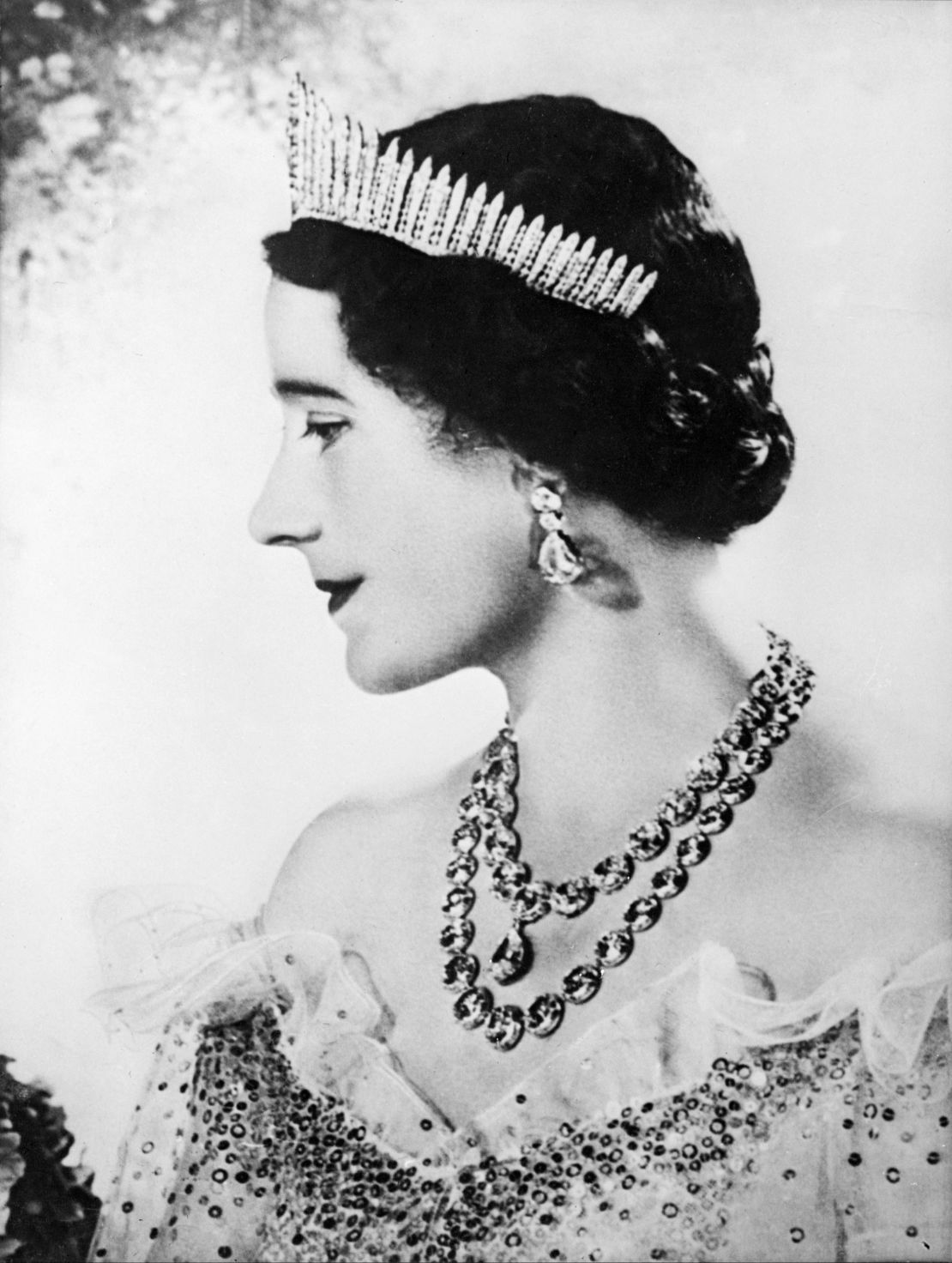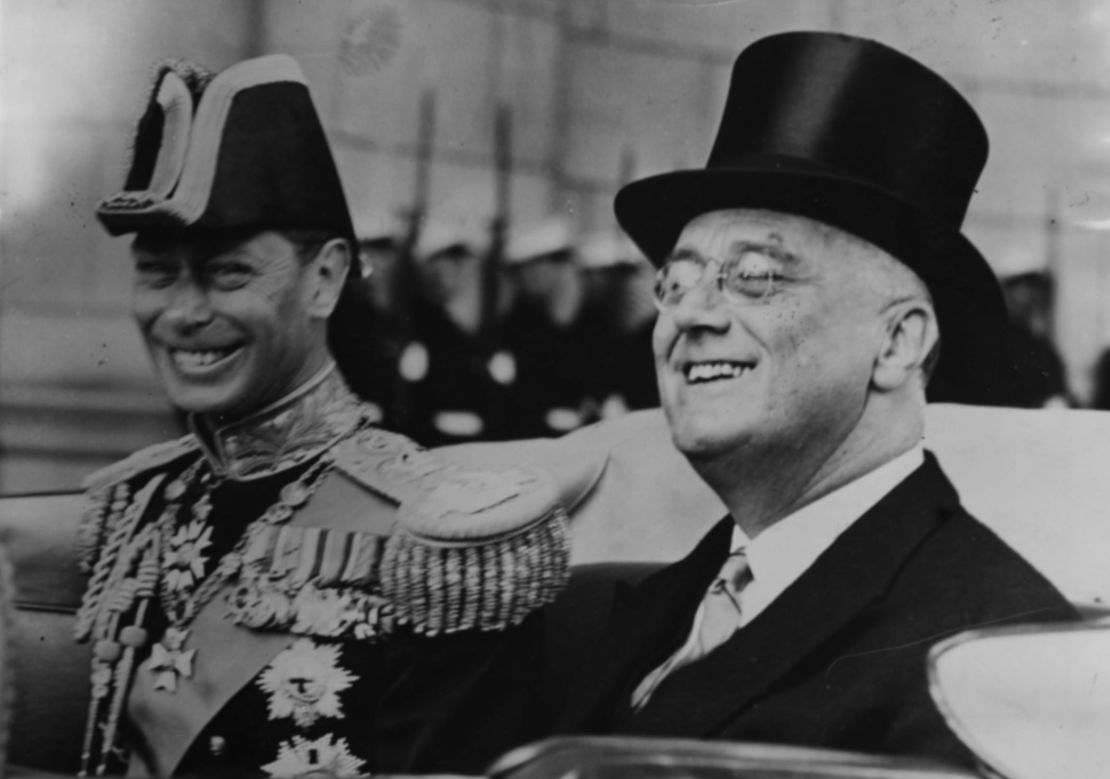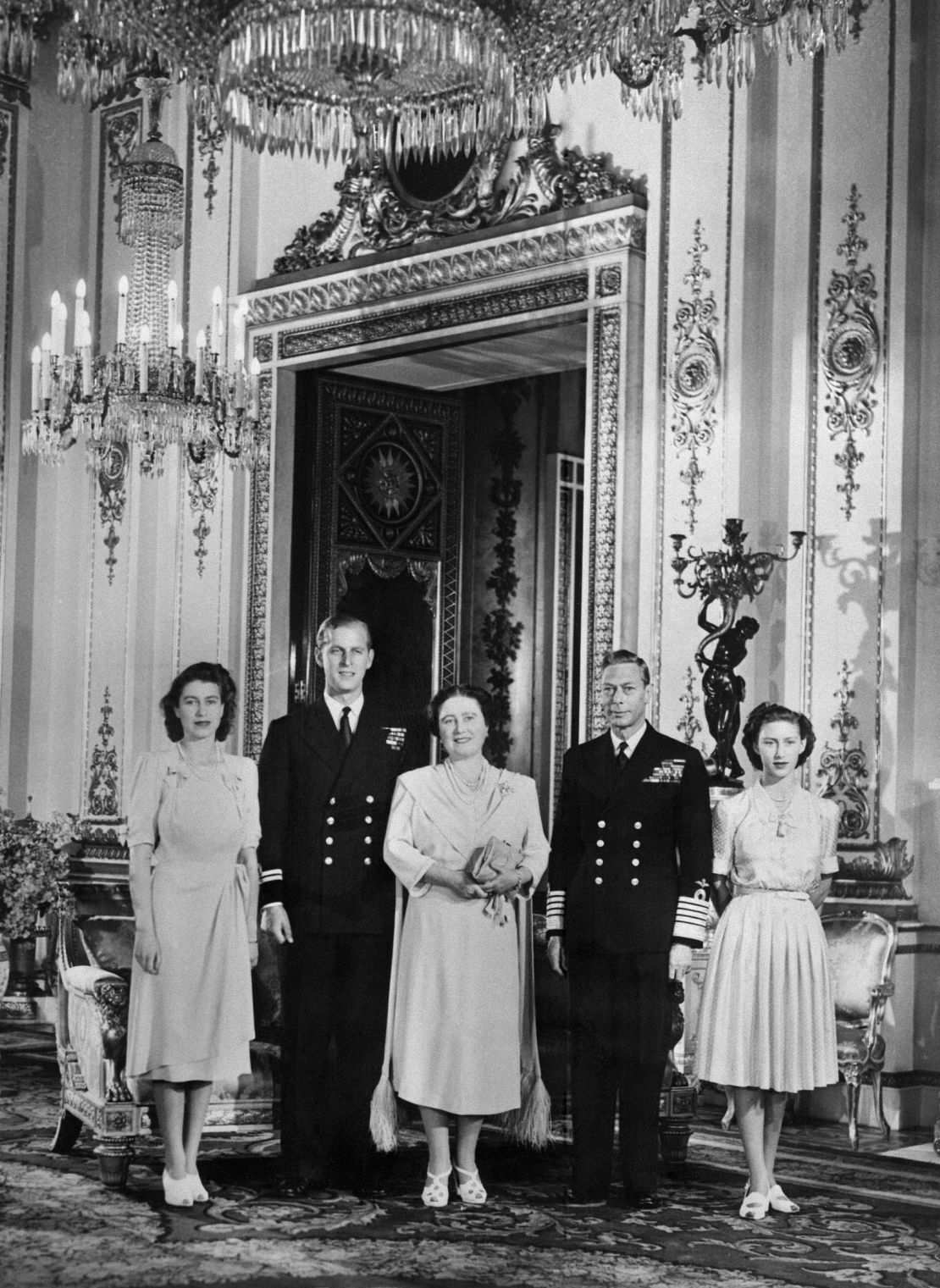For more, watch CNN Original Series “The Windsors: Inside the Royal Dynasty” Sundays at 10 p.m. ET/PT.
Sixty-eight years ago this month, King George VI died and left behind a legacy as a ruler who upheld the crown through scandal and war — despite never wanting to ascend to the throne.
And, of course, with his death came the start of a new monarch’s reign: that of his firstborn child, Queen Elizabeth II. She succeeded her father when she was 25 years old and now, at age 93, the Queen is the longest-reigning British monarch in history.
George’s story has been immortalized in movies like the Oscar-winning “The King’s Speech” and Netflix’s “The Crown,” but you may not have the full picture of his history-making life.
Here are six things to know about King George VI:
He didn’t want to be king
Albert Frederick Arthur George was born in December 1895, the second son of King George V. Known to the family as Bertie, George was shy and perfectly content to not be the heir apparent to the throne.
That was the job of his older brother, who became King Edward VIII after their father died in 1936.
But Edward’s rule didn’t last longer than a year. He abdicated his duties as king so he could marry his lover, American divorcee Wallis Simpson.
When Bertie stepped up to take his brother’s place, he chose the name King George VI in recognition of his father and to establish continuity between their reigns.
“George is a believer in the principle of the monarchy; he feels that [it] is really important to Britain’s national identity,” historian Jane Ridley says in CNN Original Series “The Windsors: Inside the Royal Dynasty.” “George’s challenge is to restore the monarchy to something like the stability that it had before his brother sat on the throne.”
He had a very strict childhood — and his stammer didn’t help
King George V was infamous for being a tough disciplinarian. His children “could be punished for something so slight as wearing the wrong kilt with the wrong jacket,” biographer Anne Sebba describes in “The Windsors.”
Bashful and insecure, George developed a stammer that earned zero sympathy from his father.
As he came of age, talking in public was akin to torture, experts say, and in stark contrast to his brother, Edward, who was known for his ease in the public eye.

“I think [George] felt the pressure of what was expected of him,” says Mark Logue, the grandson of King George VI’s speech therapist, Lionel Logue, in “The Windsors.” “The stutter sometimes prevented him from talking at all.”
His wife, Queen Elizabeth, was key during his reign
George married Lady Elizabeth Bowes-Lyon, “the daughter of a minor Scottish aristocrat,” on April 26, 1923. According to the BBC, they met at a ball in 1920, and George had to propose twice before she agreed to marry. Their first child, Princess Elizabeth, arrived in April 1926. Princess Margaret was born four years later.
Queen Elizabeth was warm, charismatic and shrewd, and she understood the importance of crafting an image of family and security for the monarchy, historian Piers Brendon says in “The Windsors.” When she became Queen, “she became the strength behind the throne, helping transform [George VI] from a stammering, insecure second son into a loved and respected monarch,” the New York Times wrote in its obituary of the Queen Mother, who died in 2002 at the age of 101.

It was Elizabeth who sought help for George’s stutter and discovered Logue.
“My grandfather realized that confidence is key,” Logue’s grandson Mark says. “They went through speeches together, replacing certain words until he felt confident. And in the run-up to the coronation, my grandfather made frequent trips to Buckingham Palace to help the king prepare for reciting the oath.”
On that day in May 1937, George stated the oath flawlessly.
He didn’t retreat during war
George attended naval training school and served during World War I; he was known as someone who would help defend the British naval forces and make the crew a cup of cocoa.

But it was during the second World War that George’s sense of solidarity was on full display. The King and Queen were under pressure to leave London for their own safety, but they refused – even after Buckingham Palace was bombed.
“The children will not leave unless I do. I shall not leave unless their father does, and the King will not leave the country in any circumstances, whatsoever,” the Queen said at the time.
He made history while eating hot dogs
In 1939, King George VI became the first reigning British monarch to set foot on American soil. His brother, Edward, had previously visited the US as a prince and had become a popular figure.
The purpose of George VI’s visit was to solidify an alliance in the shadow of an approaching world war, but it also was a chance for George to prove to himself that he was just as charming as his older brother, experts say.

The American tour was a success. President Franklin Roosevelt and first lady Eleanor Roosevelt found the King and Queen to be warm and down-to-earth — certainly not too aristocratic to enjoy a few hot dogs at Roosevelt’s home in Hyde Park, New York. The King even asked for seconds.
He had an early death
King George VI was a heavy smoker, and the stress of the war took a toll on his health. He developed lung cancer, and in 1952 died in his sleep from a coronary thrombosis. He was 56.

Upon news of his death, US President Harry Truman said King George VI had “shared to the end of his reign all the hardships and austerities which evil days imposed on the brave British people. In return, he received from the people of the whole Commonwealth a love and devotion which went beyond the usual relationship of a King and his subjects.”

















